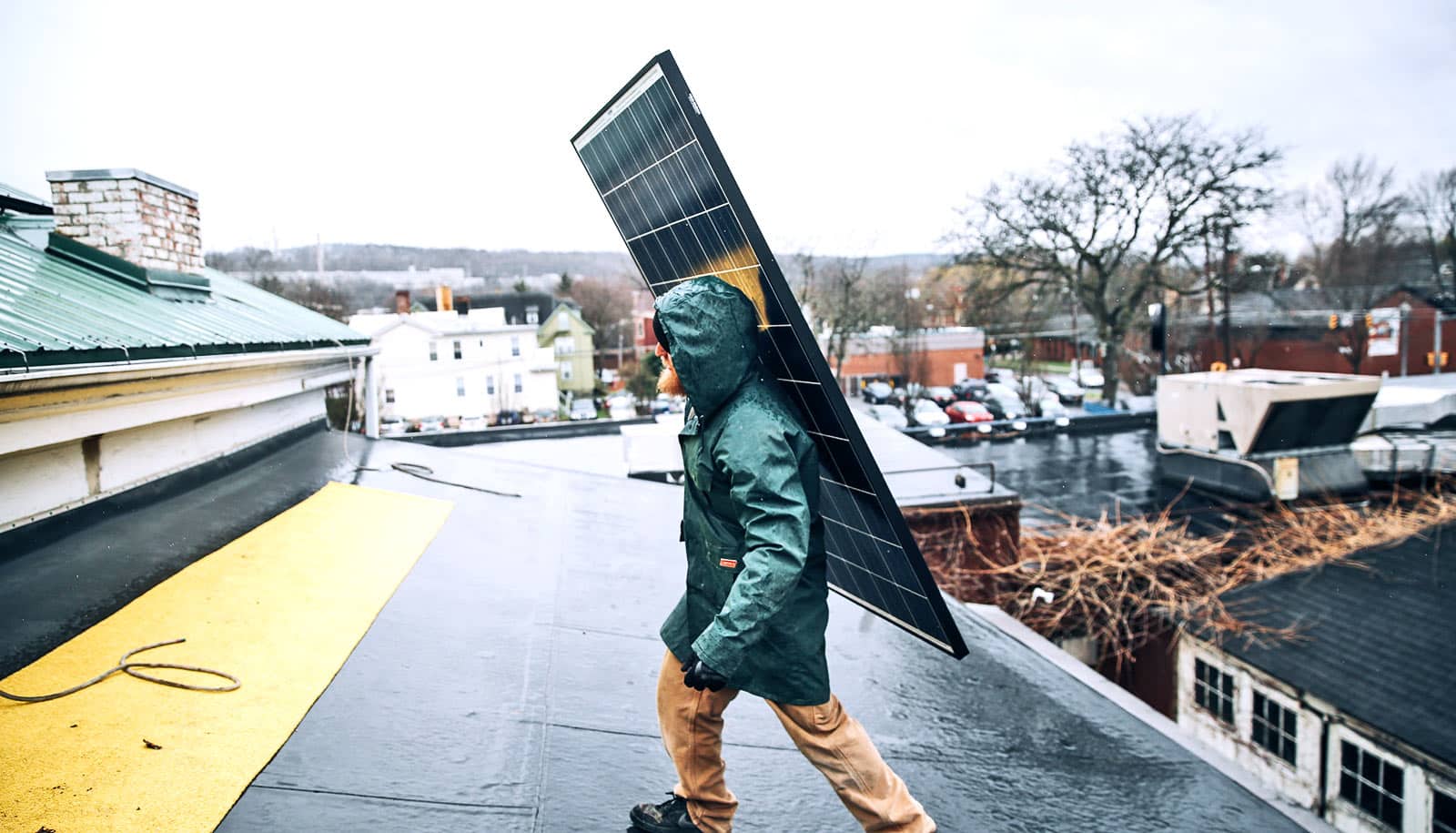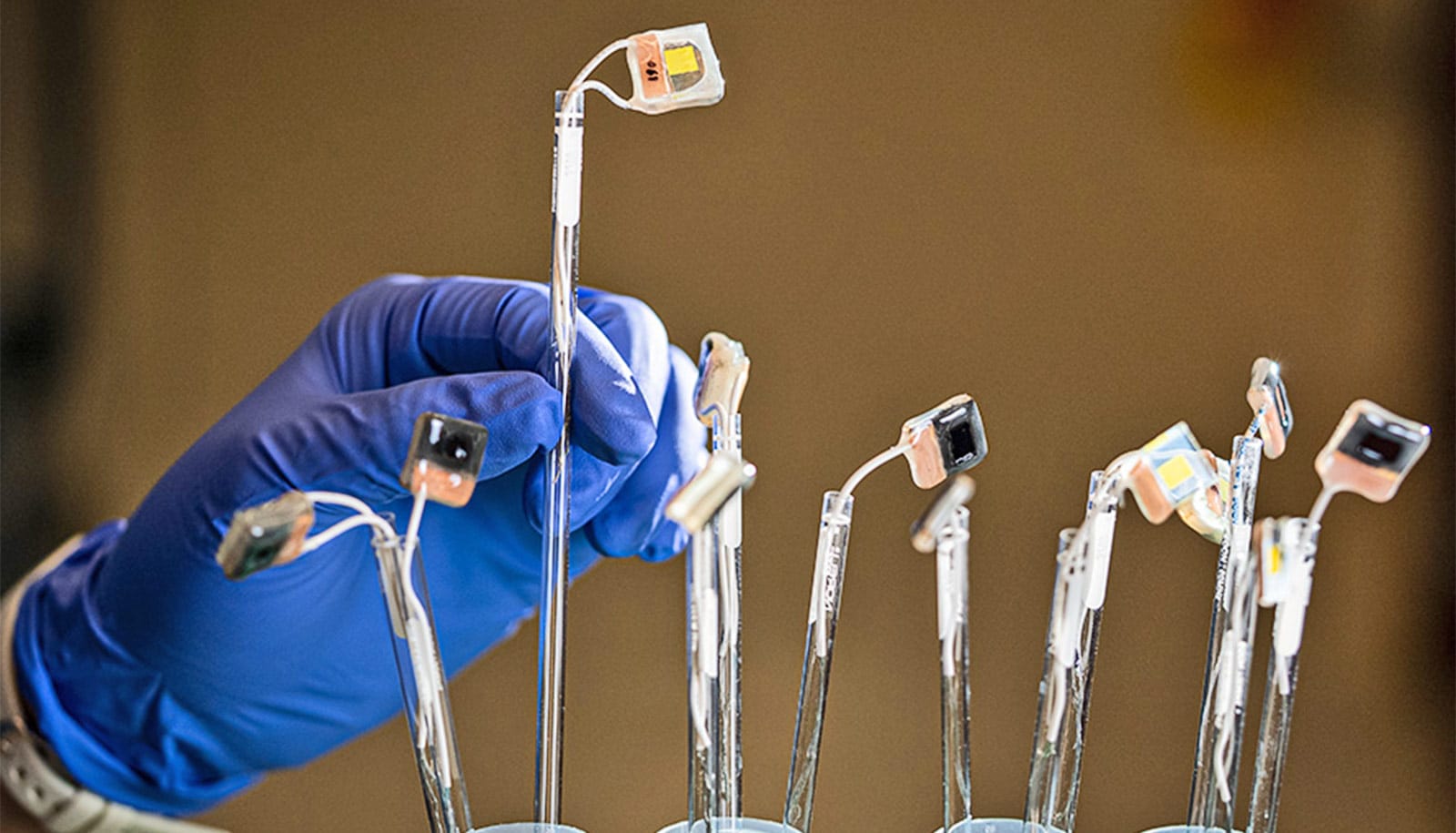Researchers have demonstrated organic solar cells that can achieve 15 percent efficiency, an advance that makes a more flexible, inexpensive type of solar cell commercially viable.
This level of efficiency is in the range of many solar panels, or photovoltaics, currently on the market.
“Organic photovoltaics can potentially cut way down on the total solar energy system cost, making solar a truly ubiquitous clean energy source,” says Stephen Forrest, professor of engineering at the University of Michigan, who led the work.
At 15 percent efficiency and given a 20-year lifetime, researchers estimate organic solar cells could produce electricity at a cost of less than 7 cents per kilowatt-hour. In comparison, the average cost of electricity in the US was 10.5 cents per kilowatt-hour in 2017, according to the US Energy Information Administration.
Organic solar cells incorporate carbon into their construction to offer several advantages over conventional “inorganic” cells. Silicon-based inorganic solar panels are costly to make—composed of thick, rigid sheets that require fixed installation points.
But carbon-based organic solar cells could be inexpensively manufactured in rolls that are thin enough to bend and curve around structures or within clothing, and made any color, even transparent, to blend in to their environment.
Despite these advantages, organic solar cells have lacked the efficiency required to compete with conventional energy sources.
“For the last couple of years, efficiency for organic photovoltaics was stuck around 11 to 12 percent,” says Xiaozhou Che, a doctoral candidate in the applied physics program and first author of a new study in Nature Energy.
To break them out of this rut, the researchers combined multiple advancements in design and process.
First, they designed a system that combines specialized layers to absorb both visible and infrared light. Essentially they stacked two organic solar cells—one capable of absorbing light from the visible spectrum starting at 350 nanometers in wavelength, and another capable of absorbing near-infrared light up to 950 nanometers in wavelength.
Buckyballs give huge boost to see-through solar cells
“By themselves, the cells achieve 10- to 11-percent efficiency,” Che says. “When we stack them together, we increase light absorption and efficiency improves to 15 percent with an antireflection coating.”
Stacking the cells required a breakthrough in process. The team developed interconnecting layers that prevent damage to the first cell, and still allow light and electrical charges to pass through.
“That’s considered a difficult process because there’s a chance the liquid used in processing the top cell will dissolve the layers already deposited underneath,” Che says.
Finally, the team demonstrated that their new design, materials, and process have a high fabrication yield of over 95 percent. This means the researchers successfully created almost all devices without short circuits, which is important for scaling up fabrication to an industrial level.
Despite setting record efficiency, the team believes they can push their progress even further.
To generate more solar power, put this material on glass
“We can improve the light absorption to increase electric current, and minimize the energy loss to increase voltage,” Che says. “Based on calculations, an 18-percent efficiency is expected in the near future for this type of multijunction device.”
The SunShot Program of the Department of Energy and the Department of the Navy, Office of Naval Research, supported the research.
Source: University of Michigan



